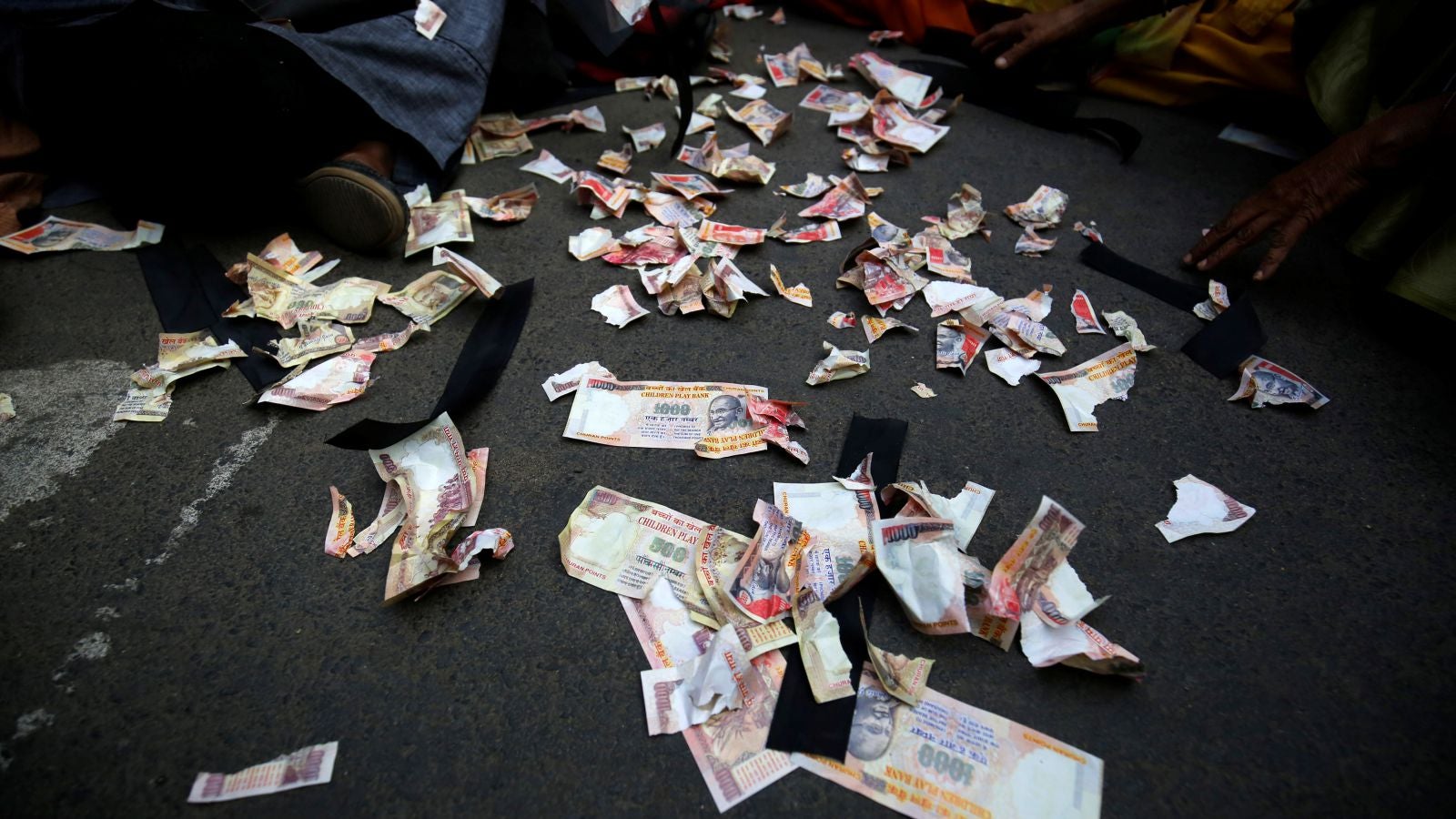15 months later, India’s central bank is still counting and counting and counting
More than a year later, the full effect of the November 2016 note ban imposed by the Narendra Modi government remains a mystery. For the Reserve Bank of India (RBI) still hasn’t finished counting the returned currency notes.


More than a year later, the full effect of the November 2016 note ban imposed by the Narendra Modi government remains a mystery. For the Reserve Bank of India (RBI) still hasn’t finished counting the returned currency notes.
“Specific bank notes are being processed for their arithmetical accuracy and genuineness and the reconciliation for the same is ongoing. This information can, therefore, be shared on completion of the process and reconciliation,” India’s central bank said in response to a query by the Press Trust of India under the right to information (RTI) Act.
Finding the total quantum of banned notes returned to the banking system is an important parameter to ascertain the effectiveness of demonetisation. The government had listed weeding out black money as an important objective, claiming that between Rs4 lakh crore ($62,24 billion) and Rs5 lakh crore of the old currency notes were unlikely to be deposited with banks. However, the provisional numbers released by the RBI had shown that the government had grossly overestimated things. Only the RBI’s final tally will give a definitive picture.
The central bank has been ridiculed more than once for taking so long to count the demonetised notes. The institution has even failed to provide a clear time-frame to complete the exercise. In the RTI query, it merely said, “Specified bank notes are being processed in an expedited manner.”
The RBI has claimed to have deployed some 60 currency verification and processing (CVPS) machines, having leased new equipment and borrowed some from commercial banks. Its employees had reportedly been even working round the clock. But nothing seems to have helped hasten the process.
In its annual report released in August 2017, the RBI said that 99% of the Rs15.44 lakh crore of demonetised currency notes had been deposited back with banks by June 30, 2017. It has taken more than five months to count the balance 1% (or less) of the notes.
The annual report did add a caveat that the numbers could be revised on completion of the process: “…subject to adjustments to be made after the completion of the verification process of the SBNs (specified bank notes) received, as also for the notes to be received from district central co-operative banks and Nepalese citizens/financial Institutions.”
The Narendra Modi government announced demonetisation on Nov. 08, 2016, declaring two high-value currency notes—Rs500 and Rs1,000—illegal. Resident Indians had time till Dec. 30, 2016, to deposit the old notes, while non-residents or those travelling abroad had till June 30, 2017. These two notes accounted for 86% of the notes in circulation by value, leading to an acute shortage of cash in India. In the months that followed India’s economic growth tapered and over a million jobs were lost.
Yet, the government insists that it helped curb black money, while making India a less cash-dependent economy. Several economists, though, believe the note-ban was ineffective, as over 99% of the notes were returned to the banks and cash circulation in the economy has returned to pre-demonetisation levels.
No matter what, the debate will rage on till the final tally of demonetised notes is out.